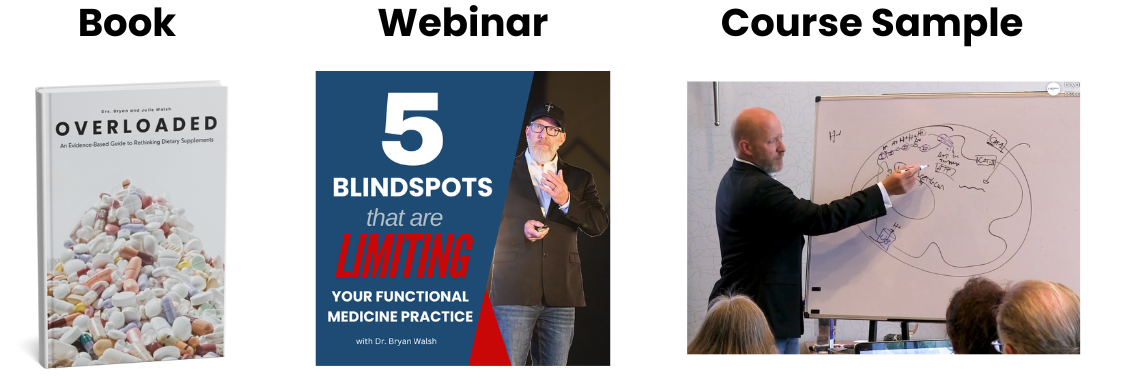The biohacking movement often encourages individuals to engage in experimental self-modification, ranging from dietary interventions to more invasive procedures. However, this approach is fraught with risks and potential unintended consequences.
Self-experimentation in biohacking often lacks the rigorous controls and safety measures present in clinical trials. This absence of oversight can lead to serious health risks. For example, a case report published in 2018 described a biohacker who developed a severe infection after attempting to inject himself with an untested gene therapy. [
8] While this may be an isolated case relating more to proper hygiene and injection technique, there are potentially an untold number of cases that either haven’t been reported, have not been correlated with negative effects, or have not allowed enough time to transpire to witness the negative effects.
Recent research has revealed new mechanisms and functions of well-known hormones, demonstrating the complexity of endocrine systems. A prime example is the glucose-dependent insulinotropic polypeptide (GIP), traditionally known for its role in insulin secretion. New studies have uncovered additional functions of GIP, including its involvement in lipid metabolism, bone formation, and cognitive processes. [
9] Not to mention that GIP was initially named ‘gastric inhibitory peptide’ as it’s only function at the time was thought to be to inhibit gastric emptying. These discoveries underscore the intricate nature of hormonal systems, how little we know about them at any given time, and the potential for unintended consequences when attempting to manipulate them.
The interconnected nature of biological systems means that interventions targeting one aspect of physiology can have far-reaching and unexpected effects on other systems. Biohackers focusing on optimizing a single parameter may inadvertently cause imbalances in other areas of health.
Many biohacking interventions also lack long-term safety data. While short-term effects may appear beneficial, the long-term consequences of these interventions remain completely unknown. This is particularly concerning for interventions that alter fundamental biological processes or introduce foreign substances into the body.
Perhaps the bigger issue that is rarely discussed is how the quantified self-movement places a strong emphasis on measuring and optimizing various biological and behavioral metrics yet completely overlooks the complex, multifaceted nature of human well-being. To the chagrin of many biohackers, this metric cannot be fully captured by numerical data alone.
While quantitative data can provide valuable insights into certain aspects of health, they often fail to capture the full picture of an individual's well-being. Metrics like heart rate variability (HRV), continuous glucose levels, sleep architecture, inflammatory markers, and hormone optimization, while potentially important, do not account for factors such as mental health, social connections, happiness, or sense of purpose - all of which are crucial components of overall health.
Research has increasingly shown that having a sense of purpose in life is strongly associated with better health outcomes and longevity. A meta-analysis published in Psychosomatic Medicine found that a strong sense of purpose in life was associated with reduced risk of all-cause mortality and cardiovascular events. [
10] This finding underscores the importance of factors that are difficult, if not impossible, to quantify.
Recent research has revealed that adipose tissue (body fat) is far more complex than previously thought. Once considered merely a storage site for excess energy, adipose tissue is now recognized as an endocrine organ that plays crucial roles in metabolism, immune function, and hormone regulation. [
11] This is yet another of countless examples demonstrating the complexity of the human body, how little we know about it and its function at any given time, and thus how manipulating something we historically have known very little about is futile at best, and dangerous at worst.
The obsessive tracking and quantification of health metrics can have negative psychological consequences. A study published in the Journal of Clinical Sleep Medicine found that sleep trackers might lead to worse sleep and a tendency toward orthosomnia, a term researchers created to discuss the unhealthy obsession with perfect sleep, similar to the unhealthy preoccupation with healthy eating, termed orthorexia. [
12]
Additionally, continuous self-monitoring in biohacking practices has been associated with increased psychological distress, including stress, depression, and anxiety, particularly when individuals become excessively preoccupied with their health metrics. [
13] Additionally, the reliability and interpretation of self-tracked data present significant concerns, as inaccuracies or misinterpretations may lead to confusion, frustration, and potentially misguided health decisions. [
13]
The biohacking and quantified self-movements often focus on short-term, individual-level outcomes. However, this narrow perspective fails to consider the broader, long-term impacts of our health choices, particularly on future generations.
Epigenetics has revealed that our lifestyle choices can have impacts far beyond our own lives. Research has shown that environmental factors, including diet, stress, and exposure to toxins, can influence gene expression in ways that can be passed down to future generations. A study published in Nature Neuroscience found that stress-induced epigenetic changes in mice could be transmitted to their offspring, affecting their behavior and stress responses. [
14]
From an evolutionary perspective, the rapid changes we are introducing to our biology through biohacking interventions may have long-term implications that are difficult to predict. Natural selection has shaped human biology over millions of years, and abrupt changes to this finely tuned system could have unintended consequences.
The emotional legacy we leave for future generations extends beyond direct parent-child relationships. Research on adverse childhood experiences (ACEs) has shown that trauma can have intergenerational effects, influencing health outcomes across multiple generations. [
15] Conversely, fostering positive emotional environments can create a legacy of resilience and wellbeing that benefits future generations.
As we traverse the growing body of information related to health improvement, it is crucial to step back and critically examine the assumptions and approaches of movements like biohacking and the quantified self. Here, we have barely scratched the surface of several key areas that demonstrate the limitations and potential dangers of these approaches.
We must approach health optimization and nutritional science with humility, recognizing the vast complexity of human health and the limitations of our current knowledge. Rather than assuming we can fully control and optimize our biology, we should remember how little we knew about the body at any given time in human history (despite the fact that we thought we knew) while reminding ourselves about the innate wisdom and complexity of this vessel we’re using to grace a handful of decades on Earth.
While quantitative measures have their place in health assessment, we must not lose sight of the qualitative aspects of well-being. Factors such as life satisfaction, sense of purpose, quality of relationships, and emotional well-being are crucial components of health that cannot be fully captured by numbers alone and merely focusing on the numbers, we might be missing out on the true essence of health and well-being.
| Study |
Participants |
Duration |
Key Findings |
Limitations |
| Liu et al. (2022)[13] |
66 older adults |
4 months |
Improved muscle endurance, no significant change in walking distance |
Small sample size, short duration |
| Andreux et al. (2019)[14] |
60 elderly individuals |
4 weeks |
Improved mitochondrial gene expression in muscle |
Short duration, limited functional outcomes |
| Singh et al. (2022)[15] |
88 middle-aged adults |
4 months |
Improved muscle strength and exercise performance |
Industry-funded, limited long-term data |


